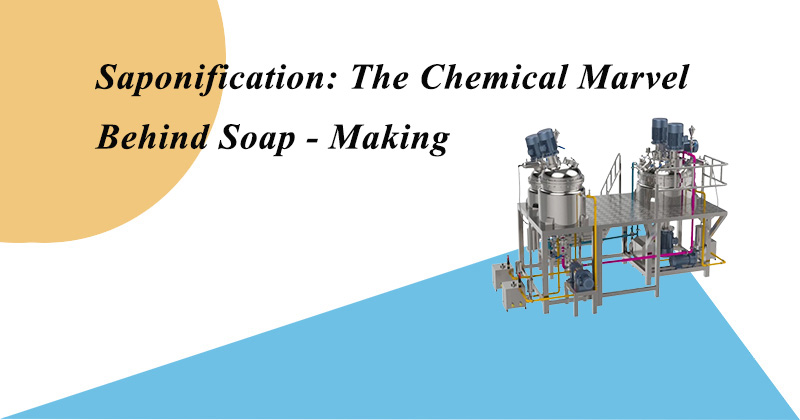Saponification is a fundamental and fascinating chemical process that has been used for centuries to create soap. This reaction is not only crucial for the production of a daily – use essential but also serves as an excellent example of the practical application of chemistry in our lives.
1. The Chemical Basics of Saponification
At its core, saponification is a hydrolysis reaction. It involves the reaction of fats or oils (triglycerides) with a strong base, typically sodium hydroxide (NaOH) or potassium hydroxide (KOH). Triglycerides are esters composed of glycerol and three fatty acid chains. When they react with the base, the ester bonds are broken.
The sodium or potassium salts of fatty acids that are formed are what we commonly know as soap. Glycerol, also known as glycerin, is a valuable by – product with various applications, especially in the cosmetic and pharmaceutical industries due to its moisturizing properties.
2. The Process in Soap – Making
Ingredient Preparation
– Oils and Fats Selection: A wide range of oils and fats can be used in saponification. Vegetable oils like olive oil, coconut oil, and palm oil are popular choices. Olive oil makes soap mild and moisturizing, while coconut oil contributes to a rich lather. Animal fats, such as tallow (rendered beef fat) and lard (rendered pork fat), were traditionally used and still find their place in some soap recipes for their unique properties.
– Base Preparation: The base, either sodium hydroxide or potassium hydroxide, is carefully measured and dissolved in water. This step must be done with caution as the dissolution of the base in water is exothermic, meaning it releases heat. Safety gear, including gloves and goggles, should be worn during this process.
Mixing and Reaction
– Once the oils are melted (if they are solid at room temperature) and the base – water solution has cooled to an appropriate temperature (usually around 100 – 110°F or 38 – 43°C), the two are combined. The mixture is then stirred continuously. At first, the oils and the base – water solution may seem immiscible, but as the saponification reaction progresses, the mixture starts to thicken. This thickening is known as “trace.”
– The trace indicates that the saponification reaction is well – underway. There are different stages of trace, such as light trace, where the mixture is just starting to thicken, and heavy trace, where the mixture is much thicker and holds its shape when drizzled from a spoon. Additives like essential oils for fragrance, colorants, and skin – beneficial ingredients such as aloe vera or oatmeal are typically added at light trace.
Molding and Curing
– After reaching the desired trace, the soap mixture is poured into molds. These molds can be made of various materials, including silicone, plastic, or wood. The soap is left in the molds for a period of time, usually a few days, to allow it to harden.
– After this initial hardening, the soap is unmolded and then cured for several weeks. During the curing process, the saponification reaction continues to completion. The soap becomes harder, milder, and its pH stabilizes. This is an important step as an uncured soap may have a high pH and can be harsh on the skin.
3. Significance Beyond Soap – Making
Saponification has applications beyond the production of soap. In the food industry, it is used to analyze the fat content in food products. By subjecting fats in food to saponification, the fatty acid composition can be determined, which is important for nutritional analysis and quality control.
In the field of biodiesel production, a process similar to saponification, called transesterification, is used. Vegetable oils or animal fats react with an alcohol (usually methanol) in the presence of a catalyst to produce fatty acid methyl esters (biodiesel) and glycerol. This provides a renewable alternative to traditional fossil – based diesel fuels.
In conclusion, saponification is a remarkable chemical process that not only gives us the means to create soap but also has far – reaching implications in various industries. Its understanding and application have been refined over time, contributing to the development of better – quality products and more sustainable technologies.

